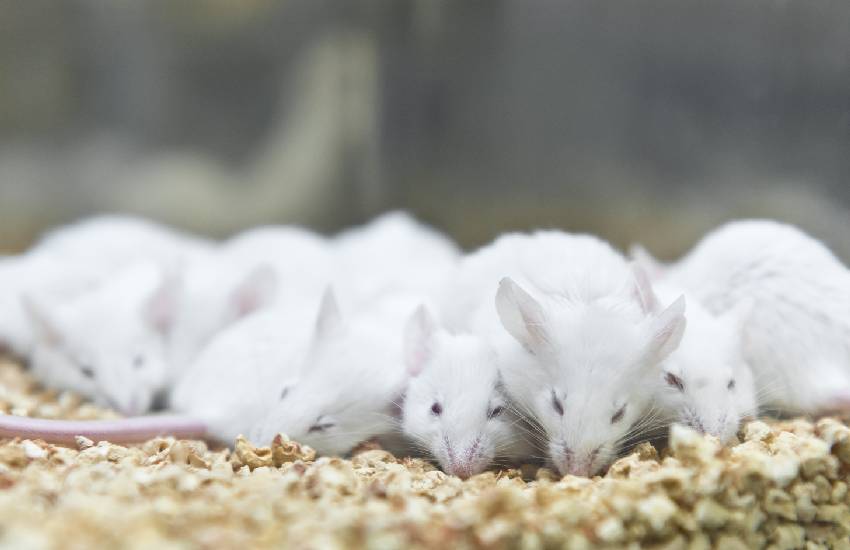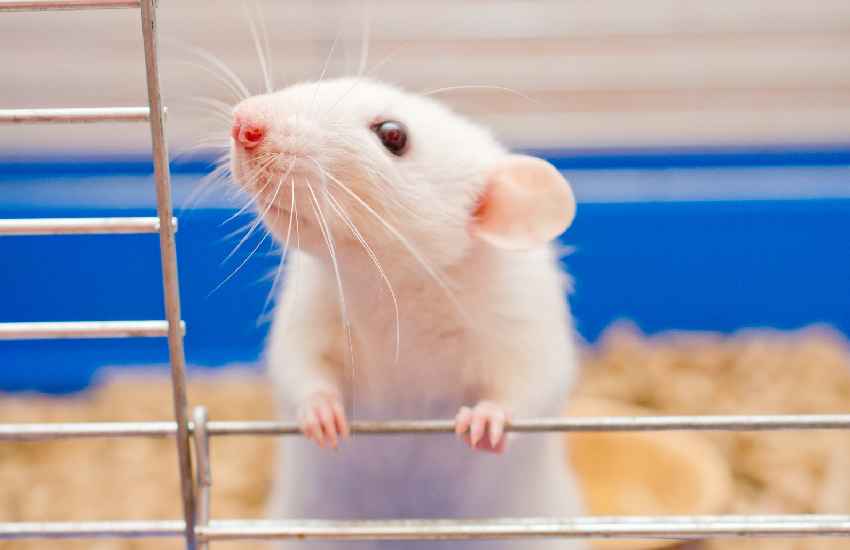
Before the Covid-19 vaccines were used on you, they were first tested on mice. White mice, that is. For ages, medical researchers use animals to verify safety of medicines and vaccines. Besides biomedical research, mice are also used in psychological experiments. But why mostly white mice and rats, not cats?
For starters, mice and rats used for medical research are not the kind found nibbling at overnight ugali in your house. Or wild rats roaming in sewer lines. Lab rats, also nicknamed ‘test tubes with tails’, are mostly bred in controlled environments and are of specific strain so that a researcher in Chicago, USA, gets the same results as one in Siakago, Kenya.
The University of Nairobi’s School of Biological Sciences, Chiromo campus, for instance, has for ages been breeding white mice and rats for research. The commonest strain are the Wistar rats, which are kept and fed in well-lit and aerated rooms with a cage holding about 10 mice.
Jacques Kabaru, an associate professor at the School of Biological Sciences, has been the animal house in charge at Chiromo for the last 30 years.
These ‘guardian rats of Kenya’ have been used on various researches on diseases like cancer, diabetes and malaria as lab rats and “are mainly used in testing drugs before the tests are escalated to a human being or pre-clinical stages. When a drug is tested you want to verify if it works or is poisonous, and this includes for diseases like cancer,” explains Prof Kabaru.
The major difference between mice and rats is body size: rats are heavier. And while mice are used for medical research, rats are mostly useful in behavioural studies, as they are social as human beings.
To test the efficacy of a diabetes drug, Kabaru says “one can induce diabetes in a rat then try the new drug to treat it” and the same case applies when testing parasitic diseases like sleeping sickness and malaria.

And even before that dawa ya mende is unleashed on roaches, government regulatory agencies take sample insecticides for testing on these ‘campus mice’ before hitting the mass market.
“The insecticide has to be tested for toxicity (are they safe?), and we are the gatekeepers,” says Kabaru. “It is from here where you get labels like ‘keep away from children.’”
Common tests for toxicity of a drug are done through the mouth, on skin, and via inhalation by the mice to check effects on human beings as “you want know what happens if the drug is taken orally; if it touches the eyes what happens; if it comes into contact with the skin, does it cause allergy?,” explains Kabaru, adding that it is then that the animal is put under observation for about 14 days or more for any symptoms of poisoning.
Lab mice and rats are domesticated for docility. They must be free from any disease to achieve better results. But why white mice and rats and not cats?
Well, mice were first used when scientists wanted to test the effects of long-term fasting in a human in early 1900s. Gradually, it became the norm for research institutions to use rats. Most strains of rats were named after the institutions including the Wistar rats, or the albino rat.
In Kenya, lab rats were imported by British colonialists who were setting up agricultural institutions for research, including the animal house at Chiromo, which is more than 50 years old.
Mice and rats are preferred for medical research for many reasons. Like human beings, they are mammals, have similar genetics, anatomy, hormones and physiology. Their response to immunity and infections are like humans, making them ideal models for researching on obesity, respiratory problems, cataracts, seizures, heart diseases, HIV, high blood pressure and spinal injuries.
Mice and rats have huge genetic diversity providing an endless resource for gene manipulation and also “mice reproduce faster; in two months they are ready to get pregnant again,” says Kabaru.

They are also easy to handle, are cost-effective in feeding and housing, and are sexually active at five weeks, making it faster to observe characteristics of adolescent behaviour. At one and a half years old, the rat is a guka, the equivalent of a human retiree, making research on ageing easy. Mice and rats also adapt easily to any environment and are understood by many scientists.
Though brown and hooded rats and mice are also used in research, the commonest and most preferred are the white strains, and for many reasons. Their white furs are easy to mark for identification, and if their skin is inflamed, it is also easy to identify. They are also the easiest rodents in teaching medical and biology students -- like the post-graduate student we met doing research on effects of miraa (khat) on human beings using the mice.
The Chiromo campus breeds its own stock, but sometimes borrows from the Kenya Medical Research Institute (Kemri) and the Kenyatta National Hospital, which keep lab rats for scientific research.
The reason is that “if you have a sister mating a brother in a small knit environment, then you are bound to get genetic diseases,” says Kibaru. “So, after several breeding cycles we have to get some males from other institutions. We also donate some to them and this way we avoid genetic defects.”
There is always a vet on call in case they fall ill especially with respiratory disease, a common occurrence among the animals.
“I feed these rats twice a day, I ensure they have enough water, which I refill every morning,” says Joshua Oduor, the animal house attendant, adding, “the first thing I check is if there is any sick animal. We change bedding thrice a week and feed them twice a week”.

These lab rats are kept in clean housing and their bedding changed often.
“The husbandry is very important, the cages they stay in are of the highest international standards, the food they eat is aflatoxin free,” says Kibaru. “We give them food and water without limit,” since they are in captivity and can’t fend for themselves.
It is unethical to conduct secret experiments the university is not aware of or use more mice than the research needs. Painful procedures are discouraged unless the mice are under anesthesia.
Says Kabaru: “We keep a very good inventory of the animal house to ensure we maintain the international standards and this has made any research that comes out from here accepted anywhere in the world.”
The lab rats are bred in demand especially if there is an upcoming research but to maintain good husbandry, only a few are kept at the animal house.
On why lab rats are bred, Kabaru says wild or domestic animals from different places would have differing results yet “science demands that different scientists all over the world should use almost identical strain of animals; this way the results obtained in Kenya will be acceptable in the US and vice versa.”
 The Standard Group Plc is a multi-media organization with investments in media platforms spanning newspaper print
operations, television, radio broadcasting, digital and online services. The Standard Group is recognized as a
leading multi-media house in Kenya with a key influence in matters of national and international interest.
The Standard Group Plc is a multi-media organization with investments in media platforms spanning newspaper print
operations, television, radio broadcasting, digital and online services. The Standard Group is recognized as a
leading multi-media house in Kenya with a key influence in matters of national and international interest.











